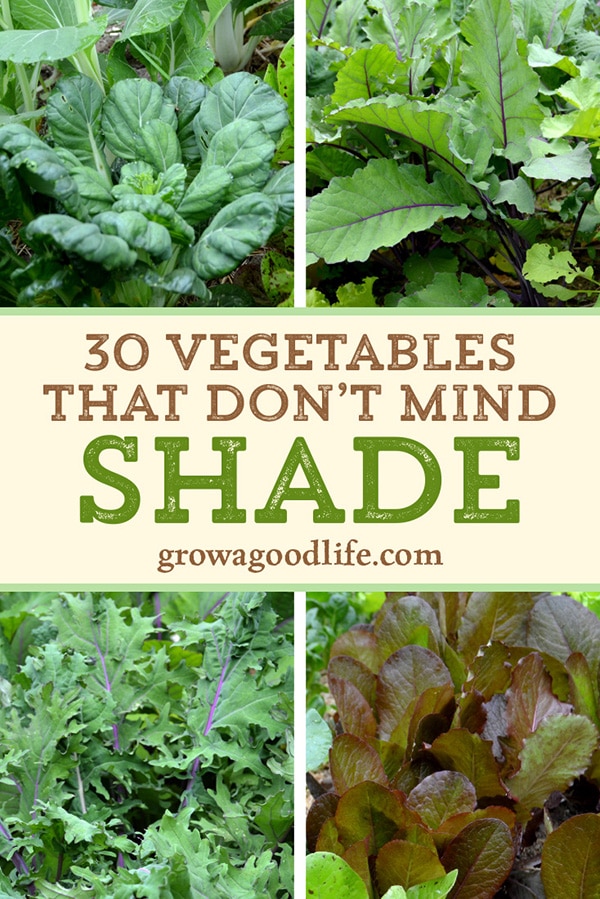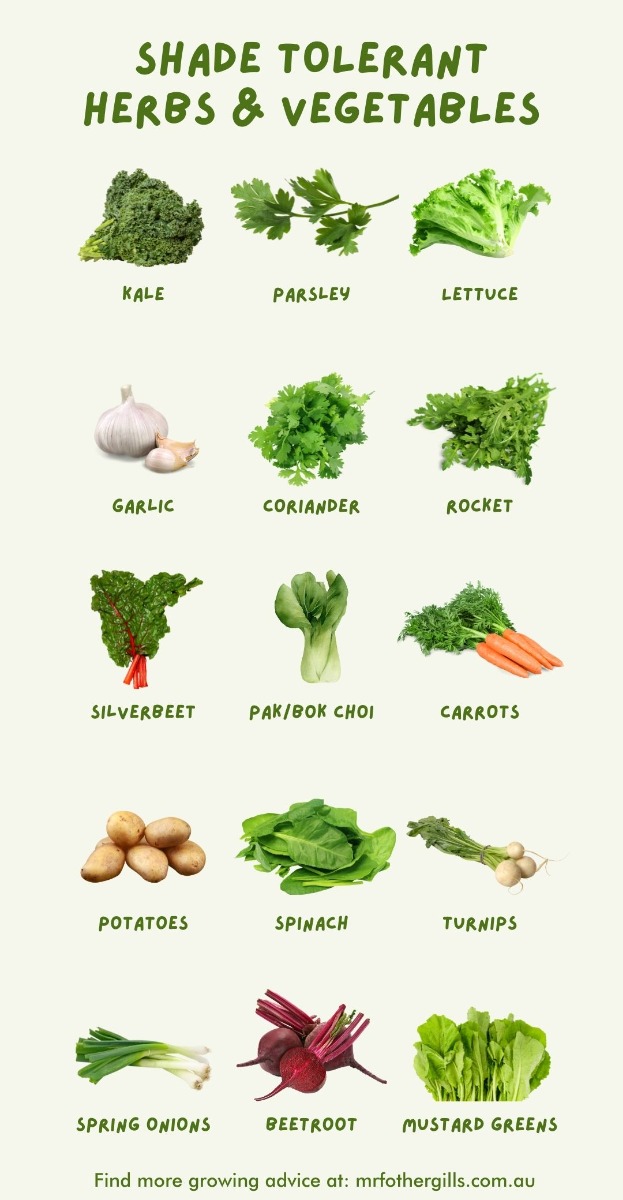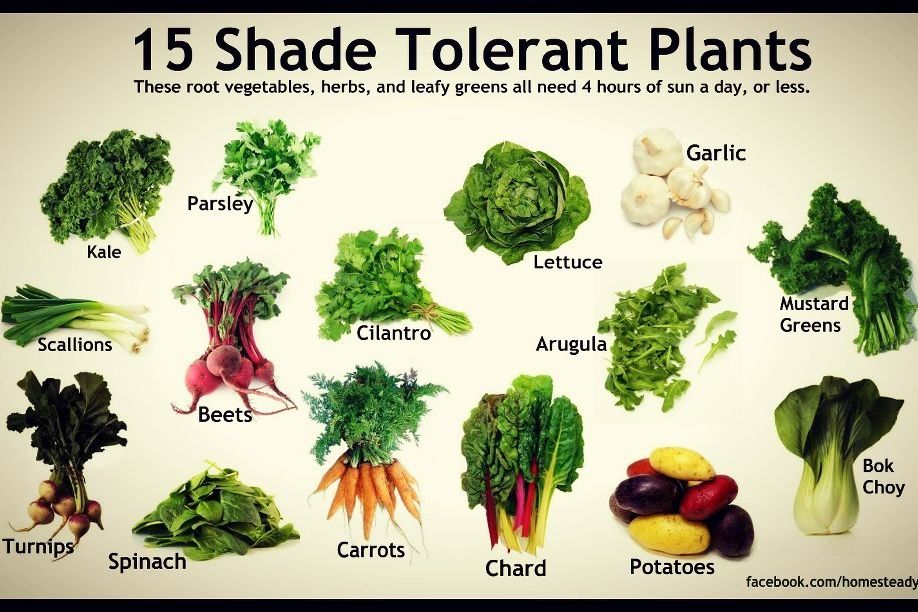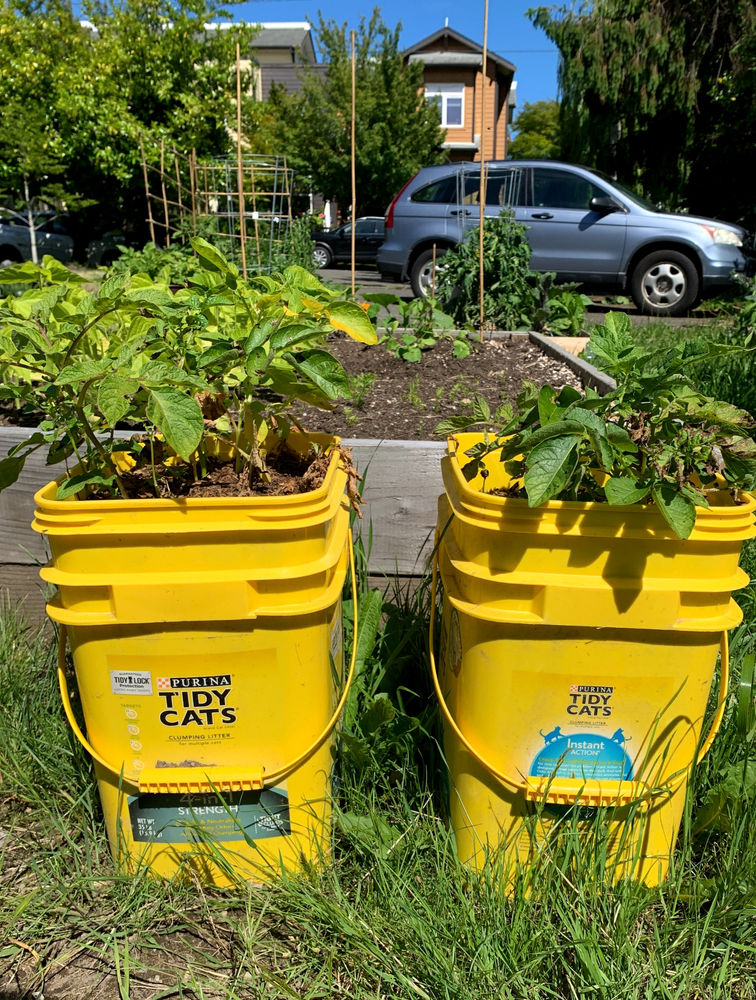Vegetables that grow in shade include spinach, lettuce, kale, radishes, and peas. These vegetables thrive in areas with limited sunlight, making them perfect for gardeners with shady yards or balconies.
With proper care and attention, these shade-loving plants can yield a bountiful harvest of nutritious, fresh produce. Whether you’re a beginner gardener or have limited access to full sun, growing these vegetables in the shade is a great way to enjoy homegrown crops and add variety to your meals.
We will explore the best techniques and tips for successfully growing vegetables in shady conditions. So let’s get started and discover the possibilities of cultivating a shade garden full of delicious and healthy vegetables.

Credit: growagoodlife.com
Table of Contents
Benefits Of Growing Vegetables In Shade
When it comes to growing vegetables, most people believe that full sun exposure is crucial for a successful harvest. However, there are numerous benefits to growing vegetables in shade that can enhance your gardening experience. By harnessing the power of natural shade, you can increase yield and extend the growing season. Let’s explore these benefits in more detail:
Increased Yield
Growing vegetables in shade can actually lead to an increased yield compared to plants grown in full sun. When exposed to intense sunlight, some vegetables can become stressed and experience stunted growth. In shade, these plants are protected from the scorching heat and can grow at a more relaxed pace. This allows them to allocate more energy towards producing fruits and vegetables, resulting in a higher yield.
- Shade-grown vegetables can develop larger leaves, enabling them to photosynthesize more efficiently.
- Leafy greens, such as lettuce and spinach, thrive in shade as it helps prevent them from bolting or becoming bitter.
- Root crops like carrots and radishes benefit from shade as it helps them grow straighter and avoid becoming woody.
- By strategically planting shade-tolerant vegetables, you can maximize your garden space and yield.
Extended Growing Season
Another advantage of growing vegetables in shade is the ability to extend your growing season. While full sun is preferred for many crops, certain vegetables are shade-tolerant and can thrive in conditions with less direct sunlight. By utilizing shady areas of your garden or creating shade with structures like shade cloth, you can enjoy fresh produce for a longer period of time.
- Heat-sensitive crops, such as lettuce and kale, are more likely to bolt in hot summer temperatures. Shade provides relief, allowing them to flourish even during the warmer months.
- Cool-season vegetables, like broccoli and peas, can be grown in partial shade to extend their growing season into the warmer months.
- By staggering plantings and utilizing shade, you can enjoy a continuous harvest throughout the year.
By reaping the benefits of growing vegetables in the shade, you can optimize your garden’s productivity and enjoy a bountiful harvest. Whether you have limited space or desire to diversify your crops, shade gardening is a valuable technique worth exploring.

Credit: www.mrfothergills.com.au
Types Of Vegetables That Thrive In Shade
When it comes to gardening in shaded areas, it’s important to choose the right types of vegetables that can thrive in low-light conditions. Fortunately, there are various options that can still produce a bountiful harvest without the need for full sun exposure. Let’s explore some of the top choices for vegetables that can flourish in shade.
Leafy Greens
Leafy greens are excellent choices for shaded garden spots. They not only tolerate but actually prefer cooler, shadier conditions, making them perfect for low-light areas. Some examples of leafy greens that thrive in shade include:
- Spinach
- Kale
- Lettuce
- Arugula
Root Vegetables
Root vegetables can also be successfully grown in shaded areas. While they might not develop as quickly as they would in full sun, they can still produce a satisfactory crop. Some examples of root vegetables suitable for shade include:
- Radishes
- Beets
- Carrots
- Turnips
Herbs
Even in shade, you can grow a variety of herbs to add flavor to your culinary creations. These plants are perfect for shaded areas and can be grown in containers or directly in the ground. Some herbs that thrive in shade include:
- Mint
- Parsley
- Cilantro
- Chives
Choosing The Right Location For Shade Vegetable Gardening
Looking for the perfect spot for shade vegetable gardening? Discover which vegetables thrive in shade and how to choose the right location for a successful harvest.
When it comes to growing vegetables in shade, choosing the right location is crucial. Assessing light levels and considering microclimates are essential steps in creating a successful shade vegetable garden. Let’s take a closer look at these factors to ensure your vegetables thrive in a shaded environment.
Assessing Light Levels
To determine the suitability of a location for shade vegetable gardening, it’s important to assess the light levels. Different vegetables have varying light requirements, and understanding these needs will help you make informed decisions. Keep these points in mind when evaluating light levels for your shade vegetable garden:
- Observe the area throughout the day to identify the amount of direct sunlight it receives. Note if any obstacles, such as tall trees or buildings, cast shadows over the area.
- Consider the duration of shade throughout the day. Vegetables that prefer partial shade may require some direct sunlight for a few hours, while other vegetables can thrive in denser shade.
- Keep in mind that morning light is cooler and less intense than afternoon sunlight. Some vegetables may thrive in the morning shade but struggle with intense afternoon sun.
Considering these factors will help you select the appropriate vegetables for your shade garden, ensuring they receive adequate and suitable light levels.
Consideration Of Microclimates
In addition to light levels, it’s important to consider microclimates when choosing the right location for your shade vegetable garden. Microclimates refer to small areas with unique climate conditions within a larger climate zone. Here’s how you can take advantage of microclimates:
- Identify areas within your garden that receive slightly more sunlight or warmth, such as south-facing walls or spots near reflective surfaces.
- These microclimates can provide a bit more light, warmth, or protection from wind, creating favorable conditions for shade-tolerant vegetable plants.
- Similarly, areas that remain consistently cool or damp may be suitable for vegetables that prefer cooler conditions, even in a shaded environment.
By leveraging microclimates in your garden, you can maximize the potential of your shade vegetable garden and provide the best growing conditions for your plants.
In conclusion, choosing the right location for shade vegetable gardening requires assessing light levels and considering microclimates. By carefully evaluating the amount and duration of sunlight, as well as leveraging microclimates, you can create an optimal growing environment for shade-tolerant vegetables. So, roll up your sleeves and embark on the exciting journey of growing a bountiful shade vegetable garden!
Best Practices For Growing Vegetables In Shade
Growing vegetables in shady areas can be challenging, but with the right practices, you can still enjoy a bountiful harvest. In this section, we will discuss the best practices for growing vegetables in the shade, including proper soil preparation, watering techniques, and the importance of mulching and composting.
Proper Soil Preparation
When it comes to growing vegetables in shade, soil preparation is key to ensuring optimal growth. Start by testing your soil’s pH levels to determine if any adjustments are needed. Most vegetables prefer a slightly acidic soil pH of around 6.0 to 6.8.
Next, ensure that the soil is well-draining to prevent waterlogging, as excess moisture can lead to root rot. Incorporating organic matter such as compost or well-rotted manure into the soil will improve its structure, drainage, and fertility.
In addition, adding a layer of organic mulch like straw or shredded leaves will help retain moisture and regulate soil temperature, creating a favorable environment for your shade-loving vegetables.
Watering Techniques
Proper watering is crucial for the successful growth of vegetables in shady areas. Although the shade may offer some protection against evaporation, it’s still important to provide adequate moisture to the plants.
When watering vegetables in the shade, it’s best to water deeply but less frequently. This encourages the plants to develop deep and strong root systems, allowing them to access moisture from the lower layers of the soil. Aim for a slow, deep watering session once or twice a week rather than shallow, daily watering.
Monitoring the soil moisture is essential. Stick your finger into the soil about an inch deep: if it feels dry, it’s time to water. Remember, consistency is key, so establish a watering routine and stick to it.
Mulching And Composting
Mulching and composting are essential practices when growing vegetables in shade. Mulching not only helps regulate soil temperature and retain moisture but also prevents the growth of weeds, which can compete for nutrients with your shade-loving vegetables.
Spread a layer of organic mulch around your plants, ensuring it is around 2 to 3 inches thick, and leave a small space around the stems to prevent rotting.
Composting is another valuable technique to provide your vegetables with the necessary nutrients. Create a compost pile or bin using kitchen scraps, yard waste, and other organic materials. Regularly turn the compost to speed up decomposition, and once it’s ready, apply a thin layer around the base of your plants to nourish the soil.
By following these best practices, you can cultivate a thriving vegetable garden in shady areas and enjoy a delicious harvest of fresh and nutritious produce.
Popular Shade Vegetable Growing Techniques
Hydroponics
Hydroponics is a popular technique for growing vegetables in shade because it does not rely on natural sunlight. Using a nutrient-rich water solution, vegetables can be grown in a controlled environment, making it well-suited for shade conditions. Below, see a basic example of a hydroponic setup for growing shade vegetables:
| Hydroponic Setup for Shade Vegetables |
|---|
| 1. Choose a suitable container |
| 2. Set up a recirculating system |
| 3. Monitor nutrient levels and pH regularly |
Vertical Gardening
Vertical gardening is an effective technique for maximizing space in a shaded area. By growing shade-tolerant vegetables vertically, you can utilize the available light more efficiently. Here’s a simple guide for setting up a vertical garden for shade vegetables:
- Install vertical trellises or stakes
- Choose compact, vine-like vegetables
- Water and fertilize regularly, ensuring proper drainage

Credit: www.pdxmonthly.com
Conclusion
Understanding the variety of vegetables that thrive in shade opens up endless possibilities for home gardeners. With the right selection of leafy greens, root vegetables, and herbs, even the shadiest of spaces can yield a bountiful harvest. By incorporating these shade-loving vegetables into your garden, you can enjoy diverse and nutritious home-grown produce throughout the year.









